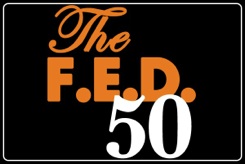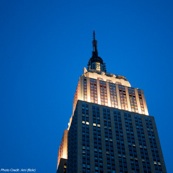Japanese, Japan, Izakaya, Pub, Gastropub, Shochu, Sake, Wine, Traditional, Authentic, Reika Yo Alexander, Jesse Alexander, Gyokuro shochu, homemade tofu, freshly made tofu, Bistro, Brasserie, Bar, Drink, Eat, New York, Manhattan, West Village, Hudson Street, 8th Avenue
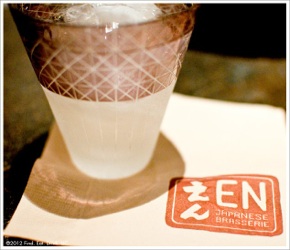
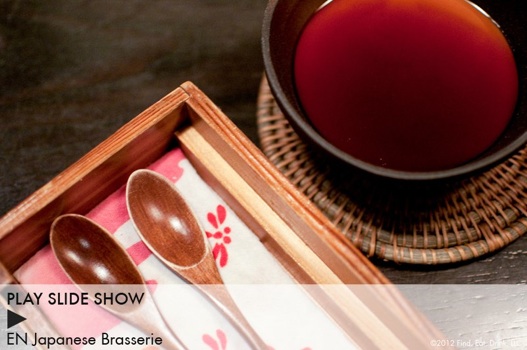

West Village - New York, NY
EN Japanese Brasserie | New York City
What
Upscale Japanese izakaya and shochu bar in New York’s West Village.
Why
Traditional Japanese izakaya food in a contemporary setting. They also make their own tofu in-house, several times a day.
Izakayas, generally speaking, are neighborhood pubs. A place to gather, drink, and snack. But neighborhood pub may not be the first way you’d describe EN Japanese Brasserie. The 5,500 square foot room is large and industrial. The design is sleek and chic. It’s more big city than small town homeyness.
Opened in 2004 by Reika Yo Alexander, whose family owns 40 restaurants in Japan, EN is indeed a place to gather, drink, and snack. But this is the gastropub version of an izakaya. The food is sophisticated and well-executed, each dish theatrically presented. The recipes are traditional-style Japanese, with a majority of the ingredients imported directly from Japan.
Signature Tofu
Four times a night, the kitchen turn out silky, freshly made tofu. Tonyu Yudofu is a hot pot of tofu, with sides of ponzu citrus soy sauce, shredded seaweed, spicy radish, and green onion to mix in. There is nothing bland about their tofu dishes. In fact, they are most likely some of the best in the city and have become popular signature items.
Traditional Fare
The menu offers many options for your meal. You can share a variety of small plates (3 for $15, individually for $6), like shishito peppers, kinpira - thinly sliced pork belly with lotus root, hijiki- seaweed and soy bean, or the unusual okara - a mixture of shitake, carrot and snow pea with a soy base. If you’d rather put your evening in the hands of the chef, they offer two version of the kaiseki (a prix fixed menu). For $65, you get seven courses including Berkshire pork, sashimi, and ochazuke - an earthenware clay pot of rice with salmon, roe, and diced shiso leaves. For $85, they up the ante and include Washugyu yaki shabu - thinly sliced Kobe-style short rib served with a hot stone for grilling. For an additional fee, you can add a sake and shochu pairing.
One of the more stand-out dishes is the mochi croquette ($11) - it’s like a sticky Japanese version of the Canadian poutine. It’s a mashed potato base, filled with duck, and covered with cubes of mochi rice cakes, then deep fried and served in a dashi broth. It’s odd sounding, but tastes delicious and pairs really well with a shochu on the rocks. Enough to say, this could qualify as good “drunk food.” Wagyu beef ($29) is served as sashimi, on a large bowl of ice. It’s delicate, rich, and filled with subtle flavors.
For dessert, they have a flan-like soba tea custard ($6). Rich, creamy, and light. It fills the need for something sweet without pushing you into Alka-Seltzer territory.
If you’re looking for a sushi joint, this is not the place to go. EN Japanese Brasserie does include a few sushi choices, but that seems more to satisfy American’s expectations of what Japanese food should be. This is the place to go for an interesting authentic journey.
Q. How did you decide to open up En Brasserie?
A. I came to New York to check out the Japanese Restaurant scene in 2000, since my brothers and I have restaurants in Japan.
To be honest, I was really disappointed that the beautiful food culture we have in Japan was so misunderstood here.
I guess at that time, there were so many fusion Asian restaurants and their existence really upset me. That trip made me want to show New Yorkers a more authentic side of a culture and cuisine that I hold so dear to my heart.
Q. Everyone talks about your homemade tofu, can you explain what makes it so unique?
A. Tofu is our signature dish in Japan. Tofu has a much stronger appreciation in Japan than here. It has the cultural weight that cheese has in Europe. Tofu can be found in almost every refrigerator in Japan.
We make our tofu more than five times a day so that our customers can enjoy our silky, rich, custard like, delicate tofu. It's very different than the packaged tofu from supermarkets. I guess it's like comparing the frozen precooked hamburgers from the supermarket to well-seasoned ones cooked on charcoal, it just tastes different. Most of the customers who do not like tofu, change their mind after they try ours.
Q. EN is known for having a great selection of shochu, what made you decide to focus on serving shochu?
A. Shochu is such a huge deal in Japan. Real drinkers, real foodies, and pretty much everyone else loves shochu.
Many people actually prefer shochu to sake, especially because you never get a hang over with it.
To create a restaurant that is an authentic representation of Japanese culture and cuisine, there is no way that I could ignore shochu. All of our staff loves shochu. Almost every Japanese person I know loves shochu. That's what we drink. It's really just about being honest.
People typically start with beer, then move on to sake, and finally to shochu. That's when the real conversation starts.
Q. When you first opened, how did you educate New Yorkers about shochu?
A. As the large majority of our staff is Japanese and as the large majority of them love shochu, it's not a difficult thing to get them started talking about it. For instance, one of things we discuss, is how it relates to many western liquors. The raw ingredient of scotch- which is barley, or vodka- which is potato, can both be made into shochu. However, the process is a bit different. Shochu is lightly distilled, only once or twice, unlike vodka which is distilled 4 or 5 times. The light distillation and filtration allow shochu to preserve many of its raw characteristics.
Q. Have you noticed a change in the perception of Japanese food since you first opened?
A. Yes, I think so. When I first arrived in New York, people went to Sushi Samba and Bond Street. Fusion places were popular. It was about the scene.
Q. What’s next for EN Japanese Brasserie?
A. Because we own so many places in Japan, we’re able to stay on the same page as what’s happening in Japan. We always update everything. We even replace our dinnerware to make sure EN is always feeling fresh and modern.
Slide Show

For more about EN Japanese Brasserie, watch the slide show.
Recommendations

Reika Yo Alexander’s recommendations for Japanese restaurants in New York and Japan.
City Guides

- New York City Guide: Download
- Brooklyn City Guide: Download
February 17, 2010


Recommended By
- Chef Jonathan Waxman (Las Vegas, NV and Los Angeles, CA)
- Reservoir Restaurant (Montreal, QC)
- Chef Kerry Simon (Las Vegas, NV and Los Angeles, CA)
- Sakaya Sake Specialists (East Village in New York, NY)



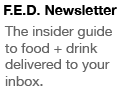




EN Japanese Brasserie
Japanese
West Village
435 Hudson Street
New York NY 10014
T: 212.647.9196 (make a reservation)
Website:
Hours:
Mon - Sat: 12pm - 2:30pm
Sun - Thu:5:30pm - 11pm
Fri -Sat: 5:30 pm - 12am


Q & A































